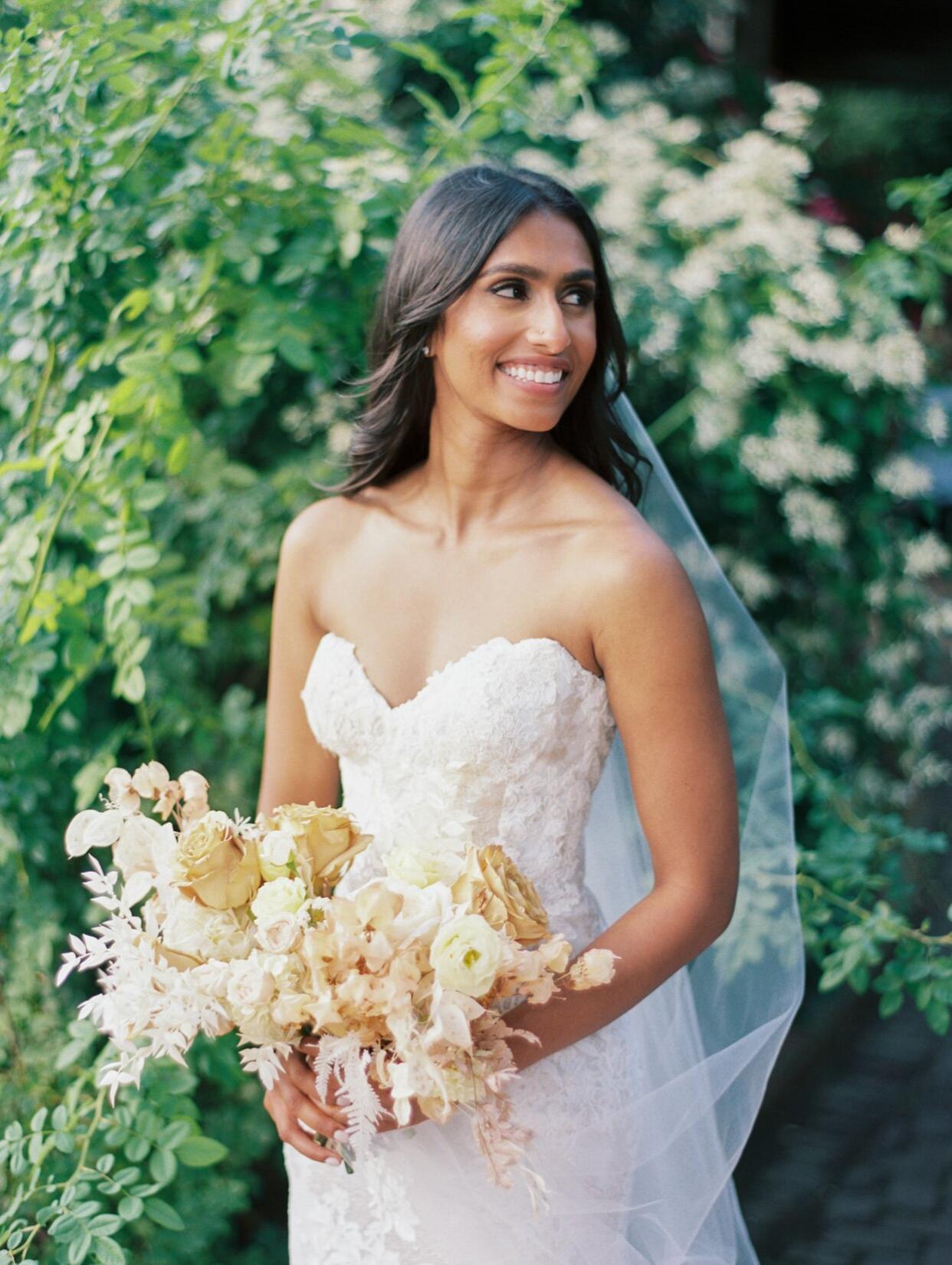How to Find a Wedding Dress Seamstress You Click With

After all the hours you spent scouring bridal magazines, making a comprehensive Pinterest board of fantasy wedding dresses, and trying on everything from mermaid dresses to ball gowns at bridal boutiques, you don't want to risk your dream dress's final look by choosing the wrong seamstress for your alterations. The alteration process can turn a gown you already love into one that's flattering from every angle, or help you realize a bigger vision with more elaborate changes to an heirloom dress. Either way, the tailor you hire to make those changes has a behind-the-scenes—but extremely critical—impact on your big day.
"With alterations on wedding gowns, there's a trust that needs to be there," says garment engineer Sara Rothan, a former alterations manager at Carolina Herrara. "It's a big thing, and the more alterations that happen, the greater the trust needs to be."
Related: Everything Your Bridal Party Needs to Know About Bridesmaids' Dress Alterations
Ask around.
Finding a few alteration shops or tailors to choose from is the first step, and while a basic Google search can bring up a list of potentials in your area, you should also try a more old-fashioned approach: Asking around. "Word of mouth is the best advertising, but really, the best situation for the bride as well," says Rothan. Sourcing recommendations from your friends and family can give you essential information on everything from the tailor's personality to unexpected charges, and better prepare you for your own experience.
Schedule an in-person meeting.
When meeting with a potential tailor, come prepared with an idea of your vision for the gown and questions about the timeline. Sara Teixeira of The Tailory in Philadelphia, recommends going over a timeline together to decide how many fittings you'll need, how far out from the wedding your dress will be ready, and whether you'll have time for changes after your final fitting. "If there are multiple fittings and the final fitting is close to the wedding, it shows that the seamstress cares about the process and getting the end result perfected to the client's vision," she says.
Rothan says your seamstress should prepare you for each step of the process. From the unfinished version you'll see at a second fitting, to any final changes that will be different from the original gown.
Confirm the tailor's skills.
An in-person meeting also offers a chance for you to see photos or samples of finished work, so you can confirm the tailor's proficiency and technique. If your gown requires large-scale changes and a tailor insists they can't be made, ask someone else: In some cases, says Rothan, the work may be too complicated for a tailor's skill set, and you may need to keep looking for someone willing to take on a more intense project.
Ask questions.
During your fittings, expect the right tailor to listen to your questions and concerns—without making you feel stupid for wondering if the plunging neckline might be just a bit too low, the back of your strapless gown a little too tight, or the hem an inch shorter than you expected. Your seamstress should listen and respond thoughtfully by either explaining why the gown has to be fitted and sewn in a certain way or offer solutions for fixing it.
"I think the most important thing is that a bride feels like their concerns are being addressed," says Rothan. "There's no situation in which a bride could ask me a question that I'd be irritated with, regardless of how insignificant, and if a tailor waves you off and doesn't answer your question, I would be concerned."
Teixeira agrees. "If you feel that you are not being heard and your concerns are not being addressed, that would be the time to go elsewhere," she says. "If you select the right professional, they will make you feel like they care about the garment and the overall experience with the bride."

